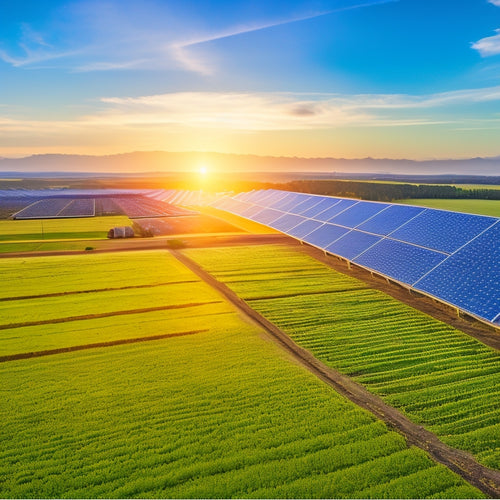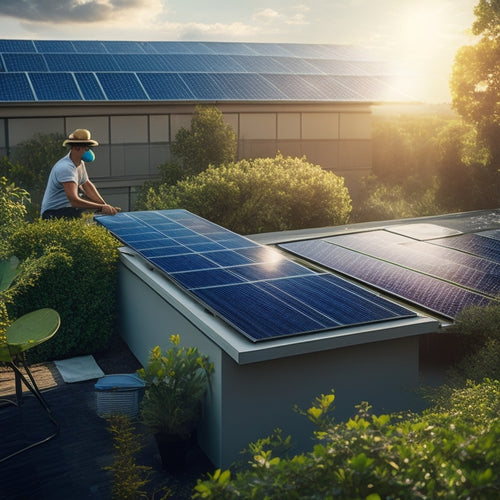Eco-Friendly Footsteps: Choosing the Right Shoes for Waitstaff
Share
As you consider the daily grind of your waitstaff, you might not think twice about the shoes they wear. But what if you could make a conscious choice that benefits both your team's comfort and the environment? Eco-friendly shoes for waitstaff are more than just a trendy option - they're a smart investment in your staff's well-being and your establishment's reputation. By opting for sustainable materials and responsible manufacturing practices, you can reduce your carbon footprint and set a new standard for your industry. But where do you start, and what are the real benefits for your team and the planet?
Key Takeaways
• Opt for eco-friendly shoes made from sustainable materials like bamboo and recycled rubber to reduce environmental impact.
• Choose shoes with non-slip soles, adequate arch support, and breathable materials to enhance comfort and reduce foot fatigue.
• Partner with eco-friendly brands that offer sustainable and recyclable shoes, promoting fair trade practices and reducing waste.
• Demand transparency from suppliers and track the shoe's journey to minimize waste and emissions, reducing the carbon footprint.
• Prioritize green certifications and adhere to regulatory frameworks to establish a green industry standard for sustainable footwear.
Sustainable Materials Matter
In addition, when selecting shoes for your waitstaff, look for sustainable materials that not only reduce environmental impact but also promote a healthier work environment. You'll want to opt for shoes made from eco-friendly materials that prioritize both people and the planet.
Bamboo, for instance, is a highly renewable resource that offers numerous benefits. Bamboo benefits include being lightweight, breathable, and moisture-wicking, making it an ideal material for shoes. Additionally, bamboo requires minimal water and pesticides to cultivate, reducing its carbon footprint.
Another sustainable material to take into account is recycled rubber. This eco-friendly alternative reduces waste and conserves natural resources. Recycled rubber is also durable and slip-resistant, making it an excellent choice for high-traffic areas like restaurants.
The Impact of Fast Fashion
When you explore the world of sustainable footwear for your waitstaff, it's important to acknowledge the detrimental effects of fast fashion, which prioritizes low-cost, trendy shoes over environmental and social responsibility. Fast fashion's emphasis on quick turnaround and disposability has led to a culture of waste and excess. This throwaway mentality contributes greatly to fashion waste, with millions of shoes ending up in landfills each year.
| Fast Fashion Consequences | Environmental and Social Impact |
|---|---|
| Resource Intensity | Water pollution, deforestation, and energy consumption |
| Waste Generation | Fashion waste, landfills, and toxic chemicals |
| Exploitative Labor | Low wages, long hours, and unsafe working conditions |
As a responsible business owner, you can make a positive impact by choosing shoes that prioritize sustainability and ethical production practices. By doing so, you'll not only reduce your ecological footprint but also contribute to a more equitable and responsible fashion industry. In the next section, we'll explore the importance of comfort and durability in waitstaff shoes.
Comfort and Durability Go Hand
As you prioritize sustainability in your waitstaff's footwear, you're likely to find that comfort and durability are closely tied to eco-friendly and socially responsible practices. By choosing shoes that prioritize comfort and durability, you'll not only reduce waste but also improve your waitstaff's overall well-being and performance.
Here are some key features to look for:
-
Slip resistance: A non-slip sole can greatly reduce the risk of accidents and injuries in the workplace.
-
Arch support: Adequate arch support can help reduce foot fatigue and discomfort, allowing your waitstaff to work more efficiently.
-
Breathable materials: Shoes made from breathable materials can help keep feet cool and dry, reducing the risk of blisters and discomfort.
- Durable construction: Shoes built to last can reduce waste and minimize the environmental impact of frequent replacements.
Eco-Friendly Brands for Waitstaff
You can support your eco-friendly initiative by partnering with brands that share your commitment to sustainability, such as those using recycled materials, reducing waste, or implementing environmentally responsible manufacturing practices. By doing so, you can create a positive impact on the environment while also promoting your business values.
Here are some eco-friendly brands that you can consider partnering with:
| Brand | Eco-Friendly Features |
|---|---|
| People Tree | Uses environmentally-friendly materials, reduces waste, and promotes fair trade practices |
| El Naturalista | Offers vegan and recycled shoes, and implements sustainable manufacturing practices |
| Veja | Uses ecological and fair-trade practices, and promotes recycling and reusing |
| Indosole | Recycles and repurposes old tires to create outsoles, reducing waste and promoting sustainability |
Recycling and Repurposing Options
Your restaurant's waitstaff can greatly reduce waste by recycling or repurposing their old shoes, which not only benefits the environment but also sets a positive example for customers and staff alike. By adopting recycling and repurposing options, you can minimize the environmental impact of your waitstaff's footwear.
Here are some innovative ways to breathe new life into old shoes:
-
Shoe Revival: Partner with local shoe repair shops to refurbish and resell gently used shoes, reducing waste and supporting local businesses.
-
Sole Swap: Organize a shoe swap program among your waitstaff, encouraging them to exchange gently used shoes and reduce the need for new purchases.
-
Recycle with Rewards: Collaborate with eco-friendly brands that offer recycling programs, rewarding your waitstaff for participating and promoting sustainability.
- Creative Repurposing: Encourage your waitstaff to get creative and repurpose old shoes as planters, bird feeders, or other innovative items, reducing waste and promoting creativity.
The Role of Supply Chains
By understanding the environmental impact of your waitstaff's shoes, you can now examine the supply chain that brings those shoes to your restaurant's doorstep, influencing factors like material sourcing, manufacturing processes, and distribution methods.
As a restaurant owner, you have the power to demand transparency from your suppliers, guaranteeing that the shoes you purchase are manufactured with environmentally responsible practices. This includes logistics transparency, which allows you to track the shoe's journey from production to delivery, identifying areas for improvement and minimizing waste.
Additionally, manufacturing accountability ensures that suppliers adhere to environmental regulations and standards, reducing the carbon footprint of the supply chain. By prioritizing these factors, you can make informed purchasing decisions that support your restaurant's eco-friendly initiatives.
Carbon Footprint Reduction Strategies
Implementing carbon footprint reduction strategies in your restaurant's shoe procurement process can greatly mitigate the environmental impact of your waitstaff's footwear. By adopting eco-friendly practices, you can reduce your restaurant's carbon footprint and contribute to a more sustainable future.
Here are some strategies to explore:
-
Conduct energy auditing: Analyze your current shoe procurement process to identify areas of inefficiency and opportunities for improvement.
-
Optimize supply chains: Streamline your supply chain to reduce transportation emissions and waste.
-
Choose sustainable materials: Select shoes made from eco-friendly materials that minimize waste and reduce environmental impact.
- Implement recycling programs: Encourage recycling and reuse of shoes to reduce waste and minimize landfill contributions.
Health Benefits of Eco-Friendly Shoes
As you consider eco-friendly shoes for your waitstaff duties, you'll be pleased to know that they offer several health benefits.
You'll experience reduced foot fatigue, thanks to the breathable, lightweight materials used in their construction. Additionally, these shoes often feature design elements that promote improved posture alignment and better ankle support, ensuring you stay comfortable and healthy on your feet throughout your shift.
Reduced Foot Fatigue
Wearing eco-friendly shoes with proper arch support and cushioning can greatly reduce foot fatigue, allowing you to stay energized and focused throughout your shift. As a waitstaff, you're constantly on your feet, and inadequate footwear can lead to discomfort, pain, and decreased productivity. Eco-friendly shoes with proper arch support can alleviate this issue, ensuring your feet stay comfortable and supported.
Here are some key benefits of reduced foot fatigue:
-
Proper Arch Support: Shoes with proper arch support reduce strain on your feet and ankles, decreasing fatigue and discomfort.
-
Foot Roll: Eco-friendly shoes with a natural foot roll encourage a smooth, rolling motion of the foot as you walk, reducing fatigue and strain.
-
Cushioning: Adequate cushioning in eco-friendly shoes absorbs shock and reduces the impact on your feet, reducing fatigue and discomfort.
- Breathability: Breathable materials in eco-friendly shoes keep your feet cool and dry, reducing sweat and discomfort that can contribute to fatigue.
Improved Posture Alignment
You can maintain proper spinal alignment and reduce muscle strain by choosing eco-friendly shoes that promote improved posture alignment, which is essential for preventing long-term musculoskeletal disorders.
As a waitstaff, you're constantly on the move, and poor posture can lead to chronic back and neck pain. Eco-friendly shoes designed with improved posture alignment in mind can help alleviate this issue.
By wearing shoes that provide adequate arch support and cushioning, you can maintain a healthy spine alignment, reducing the strain on your muscles and joints. This, in turn, can improve your core strengthening and spine flexibility.
When your core is strong, you're better equipped to maintain good posture, reducing the risk of injury and discomfort. Moreover, improved spine flexibility allows for a fuller range of motion, making it easier to move around the restaurant with ease.
Better Ankle Support
You're about to discover the benefits of eco-friendly shoes designed with better ankle support. Three key ankle stabilizers - the lateral talocalcaneal, medial talocalcaneal, and calcaneonavicular ligaments - are supported by these shoes, reducing the risk of ankle sprains and strains. This means you can confidently take on your shift, knowing your ankles are protected.
Here are some key features to look for in eco-friendly shoes with better ankle support:
-
High arch support: Provides additional stability and reduces the risk of ankle rolling
-
Heel to toe offset: Encourages a natural stride and reduces pressure on the ankles
-
Wide, stable toe boxes: Allows for comfortable toe movement and reduces pressure on the ankles
- Low-to-moderate heel heights: Reduces pressure on the ankles and promotes a natural stride
Setting a Green Industry Standard
Establishing a green industry standard for waitstaff shoes involves guaranteeing environmentally responsible practices throughout the entire product lifecycle, from sourcing sustainable materials to designing shoes with recyclable components. You'll want to prioritize materials that meet green certifications, such as recycled rubber and organic cotton. This not only reduces waste but also minimizes the carbon footprint of your shoes.
To secure compliance, familiarize yourself with regulatory frameworks governing sustainable practices in the footwear industry. These frameworks provide guidelines for designing and manufacturing eco-friendly shoes. By adhering to these standards, you'll contribute to a more environmentally conscious industry.
As you set a green industry standard, consider the end-of-life cycle of your shoes. Designing shoes with recyclable components enables responsible disposal and reduces landfill waste. You'll be setting a new precedent for the industry, demonstrating your commitment to environmental responsibility.
Frequently Asked Questions
Can Waitstaff Wear Eco-Friendly Shoes in a Non-Eco-Friendly Workplace?
You can still make a personal statement by wearing eco-friendly shoes, even in a non-eco-friendly workplace, as it reflects your values, but be prepared to address potential pushback from colleagues and management, impacting the workplace culture.
Do Eco-Friendly Shoes Cost More Than Traditional Work Shoes?
You'll likely pay a premium for eco-friendly shoes made with sustainable materials, but their reduced environmental impact may justify the cost; compare prices and consider green alternatives to traditional work shoes.
Are Eco-Friendly Shoes Suitable for High-Traffic Restaurants?
You'll find eco-friendly shoes suitable for high-traffic restaurants, as they're designed with sustainable materials and green initiatives in mind, ensuring durability and comfort for long hours on your feet.
Can I Still Get Stylish Shoes With Eco-Friendly Options?
You can definitely find stylish, eco-friendly shoes that fit your vegan fashion sense, as sustainable trends now offer a wide range of chic, environmentally responsible options that combine style with a clear conscience.
Are There Any Eco-Friendly Shoe Discounts for Bulk Orders?
You can negotiate bulk incentives with eco-friendly shoe brands, leveraging green partnerships to secure discounts on large orders, reducing costs and environmental impact simultaneously.
Related Posts
-

Solar Power for Reducing Carbon Footprint
Solar power is an effective strategy for reducing your carbon footprint. By adopting solar energy, you can cut greenh...
-

Green Ways to Maintain Solar Panels
To maintain your solar panels sustainably, start with regular inspections to catch potential issues early, enhancing ...
-

Solar Energy Storage Options for Homes
When considering solar energy storage options for your home, you'll find several effective solutions. Battery systems...


